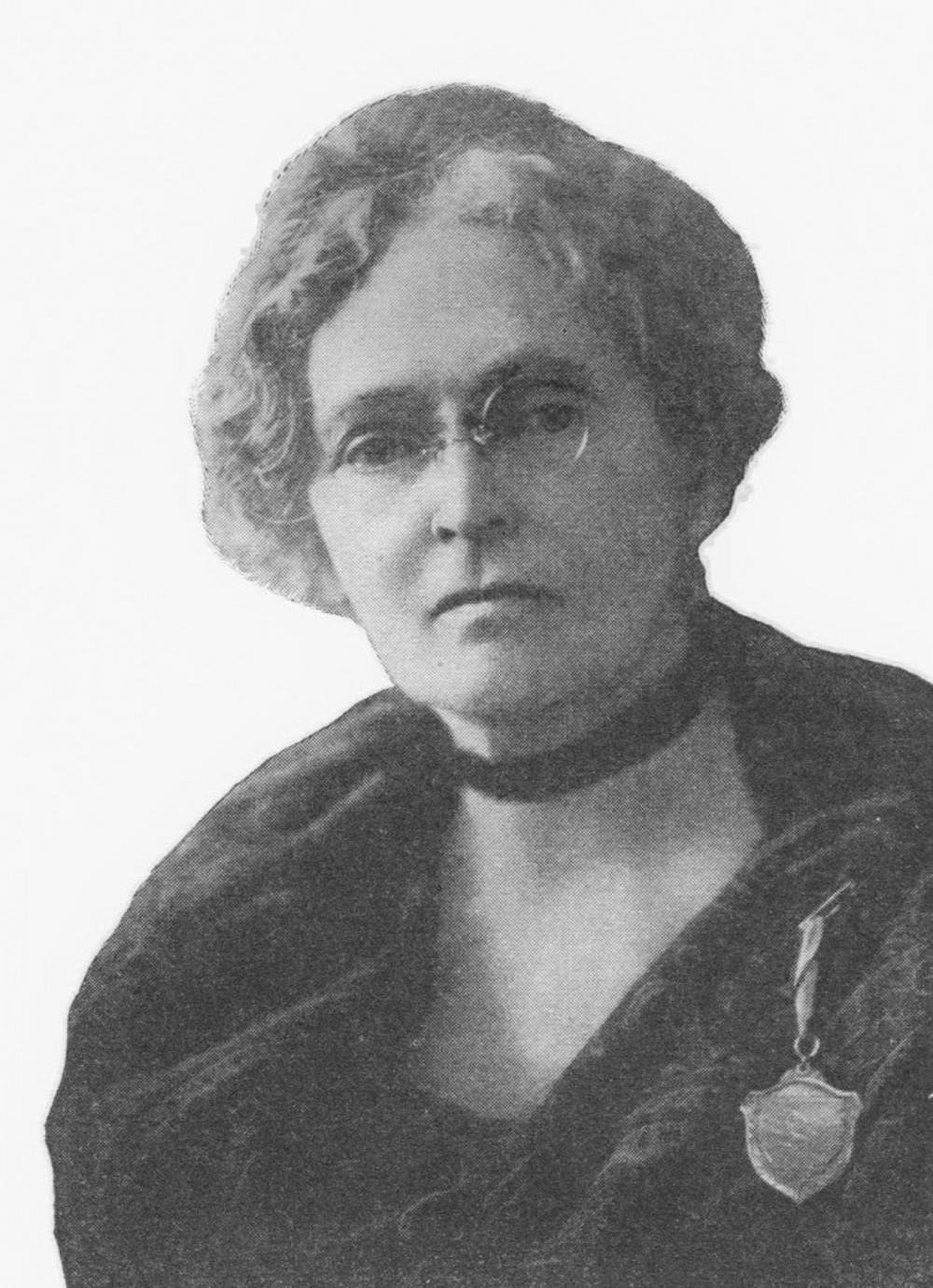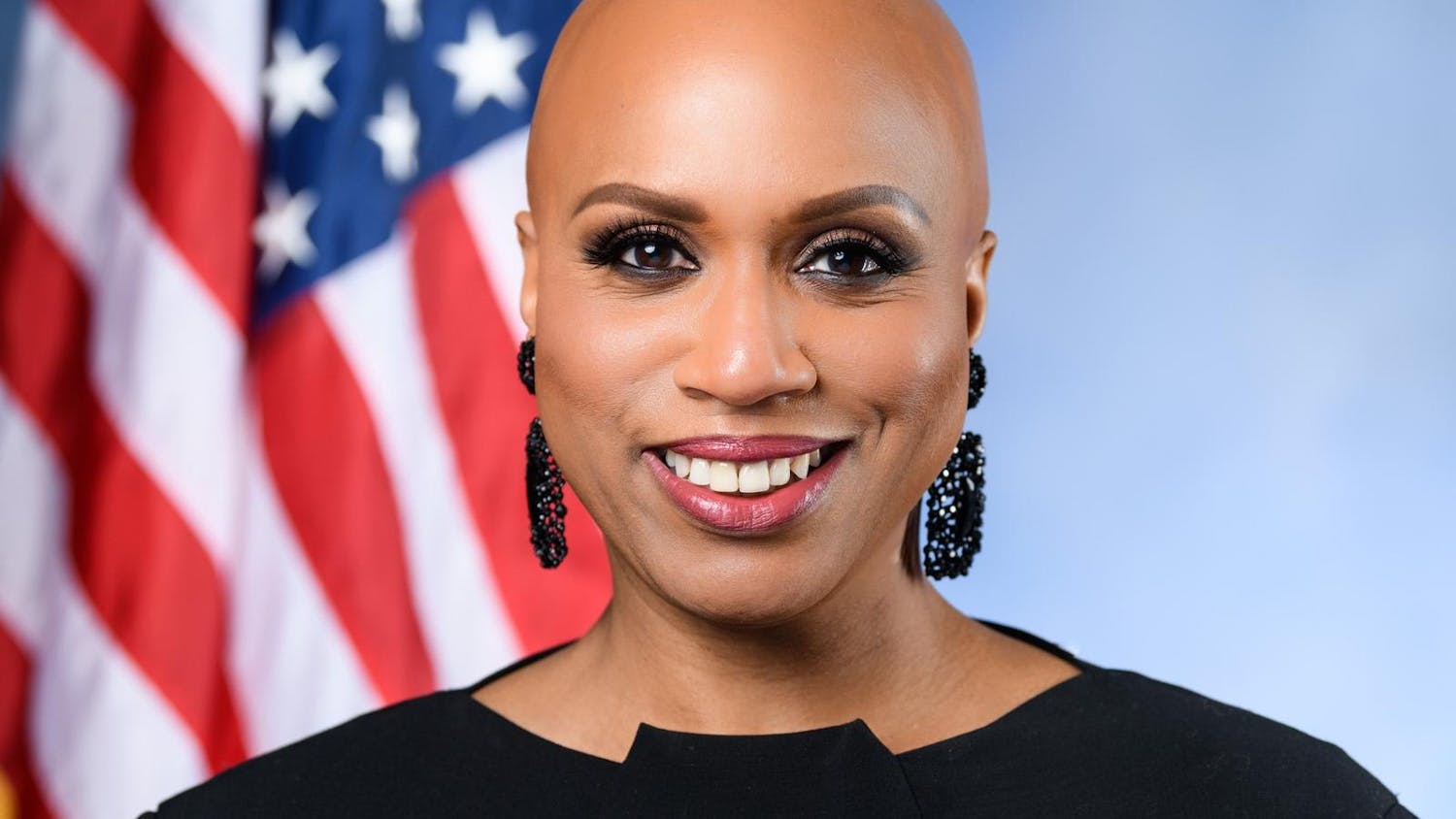When Annie Smith Peck submitted her application to the University in 1874 — the first woman to do so — she received a curt response from President Ezekiel Robinson.
“Women are not encouraged to seek higher education,” he wrote, according to Peck’s biographer Hannah Kimberley.
Later writing about her application to the University in her personal notes, Peck said she thought she had “made out so good a case so as to move their stony hearts,” according to Kimberly.
Applying to Brown and educational career
Coming from a line of Brunonians based in Providence — her father, a Rhode Island legislator and owner of a coal yard, went to Brown, as did her three brothers and uncle — she decided “pretty early on that she wanted to have” the education that all of the men in her family had.
According to John Hay Library Archivist Jennifer Betts, the reason for her rejection was clear. Peck “thought Brown should accept women” but was “turned down because of her gender.”
“There were barriers put in front of women’s access to education at Brown and everywhere across the nation at the time,” said Mary Murphy, the Nancy L. Buc ’65 Pembroke Center archivist. “There were … kinds of stepping stones to access that education,” she added. Even when women achieved higher education, they often faced sharp opposition within academic institutions and society at large.
The main source of the weariness around women’s higher education stemmed from “Sex in Education,” a book written in 1873 by Edward Clarke, a Harvard professor and member of the Massachusetts Medical Society, Kimberley said. The book argued that women who pursued an education were committing a “slow suicide” because they were directing energy to their brain which siphoned energy from their reproductive system, leading to potential infertility.
While Kimberley doubts whether Peck’s parents believed Clarke’s book, she said they were likely influenced by this kind of thinking and refused to let Peck apply to universities. But after Peck refused to marry unless she was permitted to receive an education, her parents relented.
This was one in a series of examples of Peck’s “stick-to-itiveness,” according to Kimberley. When Peck “set her mind on something, she just didn’t stop, and if someone told her no, that was just a signal to push harder.”
Having already received her teaching certificate from Rhode Island College, at that time known as Rhode Island State Normal School, by the time she applied to Brown, she instead “looked west and realized that the University of Michigan (had) just opened its doors to women,” Kimberley said.
Peck received an undergraduate and a master’s degree in Classics from the University of Michigan before becoming the first woman to attend the American School of Classical Studies in Athens where she studied archeology, teaching high school intermittently throughout her education. It was in Europe where she found a passion for climbing.
After her time in Greece, Peck returned to the United States where she was a professor at Smith College and Purdue University for 11 years. Realizing that female teachers made less money than their male counterparts, she decided to quit teaching in 1892 to work on the lecture circuit, giving lectures on Greek antiquity which financed her climbing expeditions in Europe and Central and South America. She took summers off from lecturing to climb the White Mountains in New Hampshire, Kimberley said.
As Peck began her career as a mountaineer, Brown — the school that rejected Peck because of her gender — was reaching new heights under the leadership of President Elisha Benjamin Andrews, a friend of Peck’s brother who frequently corresponded with Peck and financed her expeditions. According to Kimberley, Bennie, as Peck referred to him in letters, along with Sarah Doyle, Peck’s high school teacher and an enormous influence for the young mountaineer, founded a women’s college connected to Brown in 1891 that would later be named Pembroke College.
Mountaineering career and fame
Following several years on the lecture circuit, Peck returned to Europe in 1895 to climb the Matterhorn, a feat she only half-completed in 1885 because she did not have $50 to hire a guide when she was studying as a student in Athens, Kimberley said.
She gained immediate international fame after her ascent of the Matterhorn, not because she was the first woman to climb the mountain (there had been women before her) but because she did it wearing pants. “That becomes a big deal in the press, because at the time women (were) not wearing pants,” Kimberley said. “Some women are getting arrested for wearing pants in public — it was called an affront to men’s attire.”
After her infamous Matterhorn ascent, Peck switched from giving lectures on antiquity to talking about climbing, which drew greater crowds, according to Kimberley. She also wrote about her travels, publishing four books throughout her life. This newfound notoriety led her to aspire to greater heights, setting her sights on a mountain no woman had climbed.
Peck’s ambition led her to Mount Popocatépetl and Mount Orizaba in Mexico in 1897, two years after climbing the Matterhorn, where she achieved the altitude record for women at the latter.
The next logical step for Peck was to go where no one else — man or woman — had ever gone before, “setting her sights on Mount Huascarán” in Peru, “believed to be the highest peak in the Western world,” Kimberley said. After failing multiple times to reach the summit, Peck reached the top in 1908 at the age of 58.
Three years later, at the age of 61, she once again gained recognition for reaching the top of Peru’s Mount Coropuna where she planted a banner reading “Votes for Women.”
Politics, women’s rights and Peck’s legacy
“She was quite political. She was a suffragist,” Kimberley said, adding that Peck was also the president of the Joan of Arc Suffrage League in New York.
Peck’s political influence also extended to national politics, where “different politicians would hire her to campaign for them” given her oratory skills, according to Kimberley. One such politician was Woodrow Wilson, whom Peck campaigned for in 1912, she added.
The mountaineer, educator and suffragist was so “well known” that she was “comfortable going to the White House, walking up to the gates and saying, ‘I think President Roosevelt would like to meet me,’ and the attendant would say, ‘Yes, I think he would too. Can you come back on Monday?’” Kimberley said.
Her oratory skills captivated crowds when she gave political speeches. “When she (spoke), people (were) in awe of her … she (had) a wicked sense of dry humor,” Kimberley added.
Peck was “very much ahead of her time,” Betts said, referring to the many careers she held throughout her life. “She was a remarkable woman.”
Despite Peck’s professional success, “she was always broke,” Kimberley said, “but she was always working, and she never stopped really.”
Throughout her life Peck maintained financial independence, never marrying.
Toward the end of her life, Peck decided she wanted to go back to Athens, reaching the top of the Acropolis in what would be her last climb. While in Greece, she became ill and cut her trip short, returning to New York City where she died on July 18, 1935 at the age of 84. In her obituary, The New York Times quoted the magazine Athenaeum, which wrote of Peck: “She has done all that a man could, if not more. She had sagacity, and with it, ‘nerve’ and ‘grit.’”
Following her death, Peck was buried in the North Burial Ground in Providence alongside her family, where she remains. On her grave is an inscription from a tribute by New York Times Editor-in-Chief John H. Finley, given to Peck on her 80th birthday. Etched into stone it reads, “You have brought uncommon glory to women of all time.”

ADVERTISEMENT




